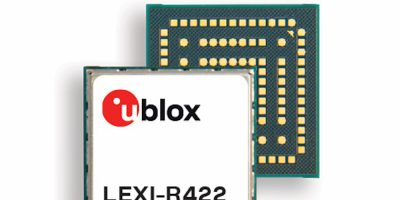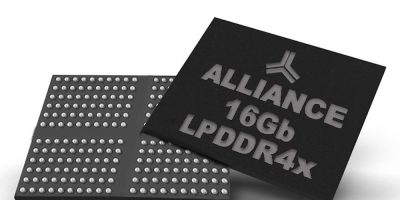Two monolithic, unipolar Hall-effect switched have been designed by Diodes for proximity sensing in battery-powered applications. They have a low 1.1 microA supply current at 1.85V, and 1.6 microA at 1.6V to 5.5V, which make them suitable for battery-powered portable equipment like smartphones, laptops and wearables. They can also be used for domestic appliances, game consoles and industrial hardware use.
The 1.6V to 5.5V operating voltage enables the switches to be powered directly from a portable device’s battery, eliminating the area and cost of power conversion. Output 1 in the dual-output AH139x series responds to a North pole, while Output 2 responds to a South pole with typical operating points of 25G (AH1391) and 30G (AH1392). The single output on the AH138x series responds to a South pole on the part-marking side with typical operating points of 18G (AH1381), 30G (AH1382), and 45G (AH1383).
The tight operating window ensures a lower magnetic spread, said Diodes, while the chopper-stabilised design provides minimal switch point drift and “superior temperature stability”. The switches also have a strong human body model (HBM) electrostatic discharge (ESD) protection. Metrics are 8kV for the AH138x and 6kV for the AH139x series. These devices also have push-pull outputs that do not require an external pull-up resistor, simplifying system design, saving board space, and lowering the bill of materials.
All models are provided in DFN1010-4 and DFN1410-4, which are claimed to be the industry’s smallest packages. The AH1381, AH1382, and AH1383 versions are additionally available in SOT23 packaging.
Diodes delivers semiconductor products to companies in the automotive, industrial, computing, consumer electronics and communications markets. Its product portfolio includes discrete, analogue and mixed-signal products and packaging technology.
The company has worldwide operations of 32 sites, including engineering, testing, manufacturing, and customer service.
ICs & Semiconductors
Consortium develops programmable binaural hearing aid SoC
The programmability of a prototype binaural hearing aid SoC enables developers to create hearing aids which process critical sounds optimally while simultaneously reducing background noise.
Compact LTE-M / NB-IoT module by u-blox has 2G fallback capability
The LEXI-R4 is a compact module that has been customised for applications where space is limited. It has dimensions of 16 x 16mm and supports all LTE-M and NB-IoT bands with an RF output power of 23dBm. It also has the possibility to operate on a 2G network. Typical applications are small asset trackers, such as pet and personal trackers, micromobility devices and luggage tags. It is also able to encompass larger applications, such as alarm systems, vending machines and stolen vehicle recovery systems, advised u-blox.
Four LPDDR4X SDRAMs halve power consumption
Four SDRAMs by Alliance Memory combine low voltage operation with fast clock speeds. The fourth generation LPDDR4 SDRAMs range from 2Gbit to 16Gbit.
About Weartech
This news story is brought to you by weartechdesign.com, the specialist site dedicated to delivering information about what’s new in the wearable electronics industry, with daily news updates, new products and industry news. To stay up-to-date, register to receive our weekly newsletters and keep yourself informed on the latest technology news and new products from around the globe. Simply click this link to register here: weartechdesign.com







